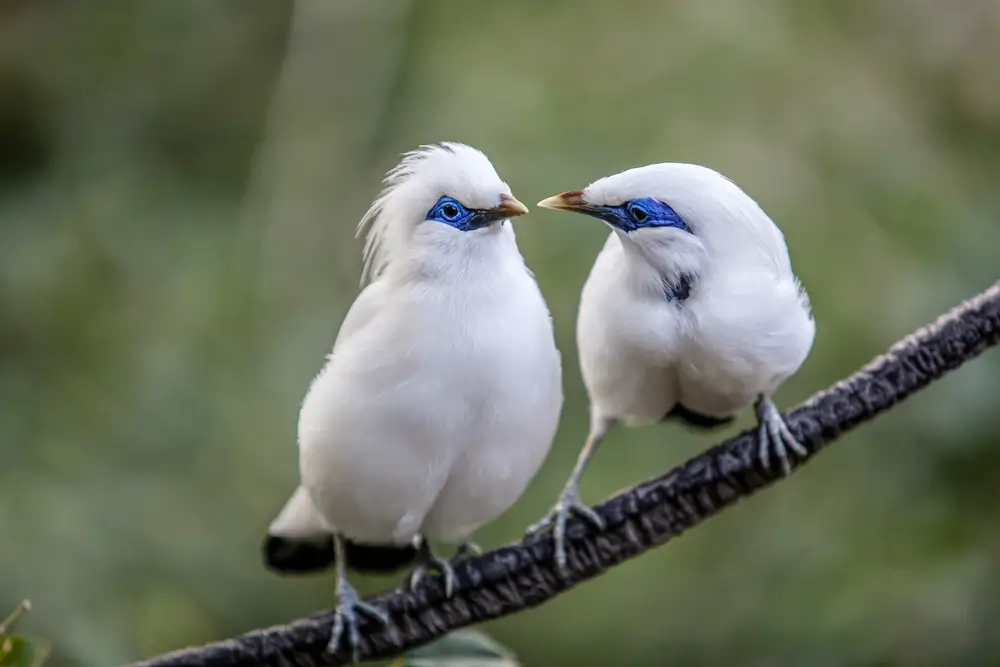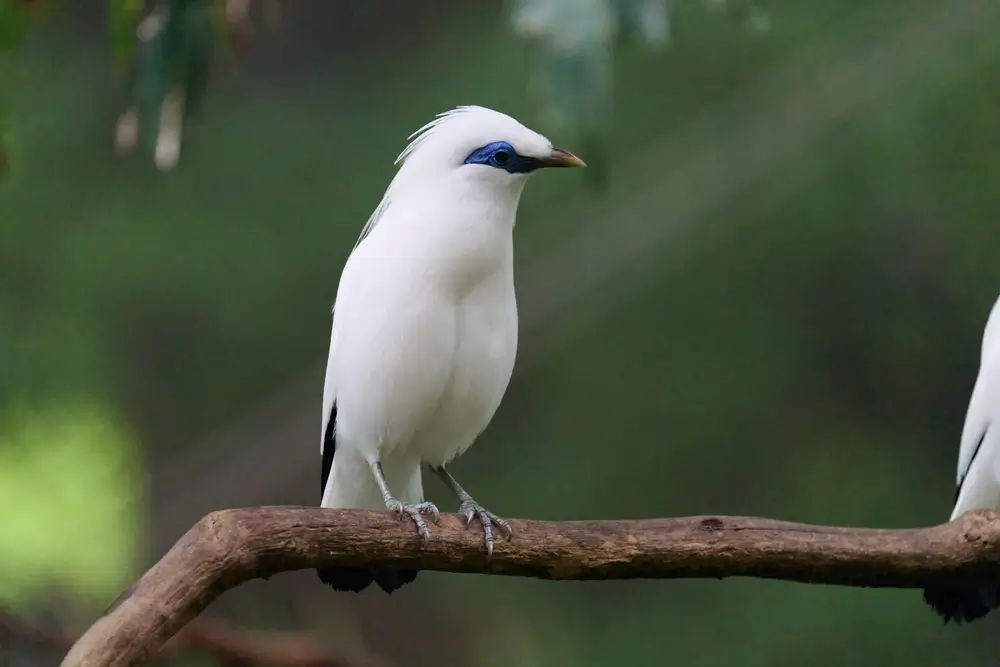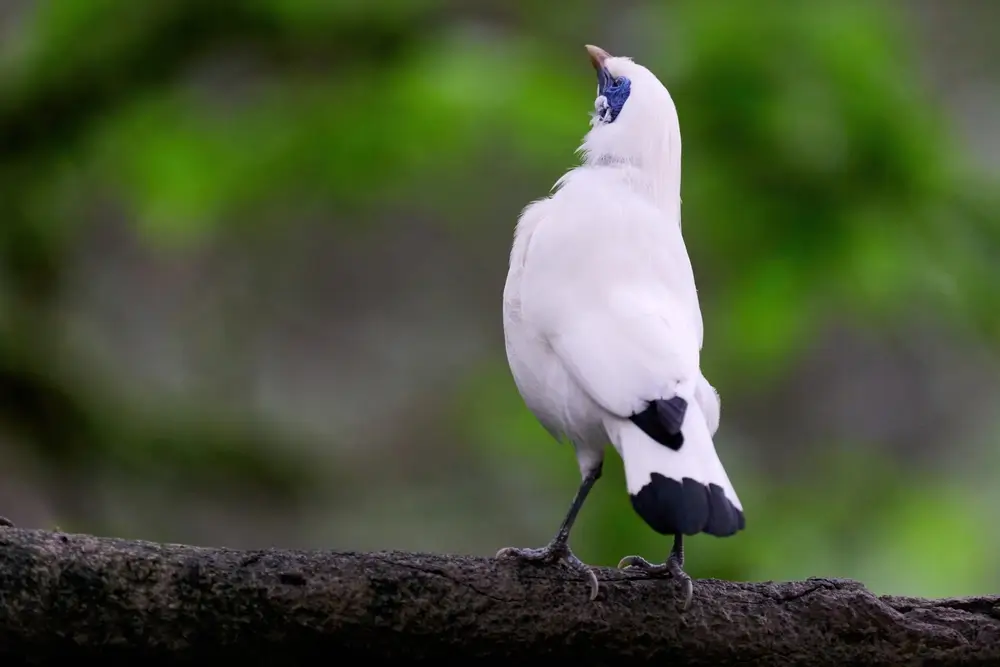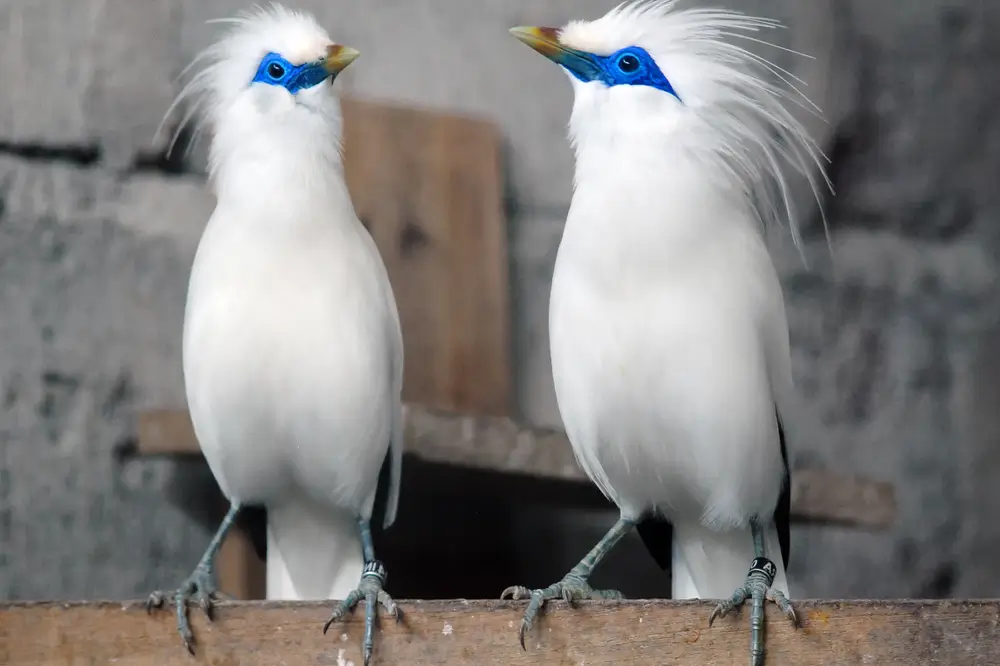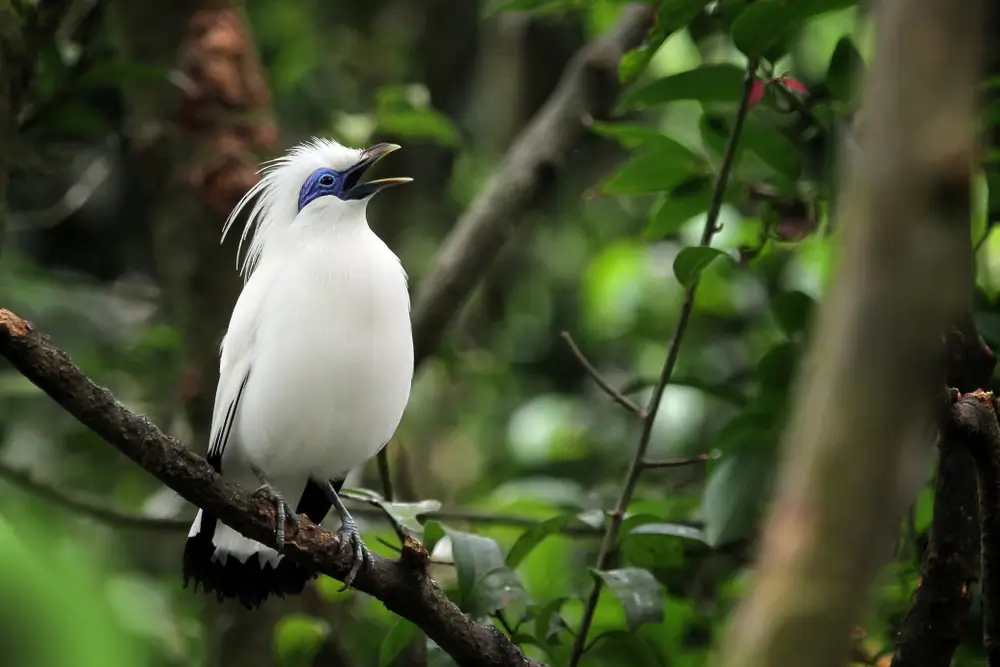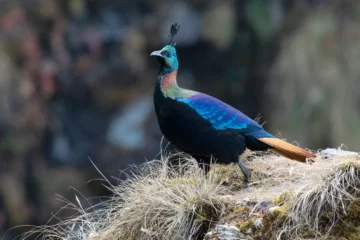The Bali Myna is a rare and white songbird native to Bali. It’s known for its striking blue eye patches along with its soft and whistling calls. It’s often seen in bird conservation centers and zoos in the USA.
This bird is critically endangered, with fewer than 100 left in the wild. Many American bird lovers support global efforts to protect and breed the Bali Myna.
Images of Bali Myna
Price of Bali Myna
A Bali Myna typically costs between $1,000 and $3,000 in the USA. This depends on age, health, and the breeder. It’s a rare and endangered bird, which makes it more expensive than most pet birds.
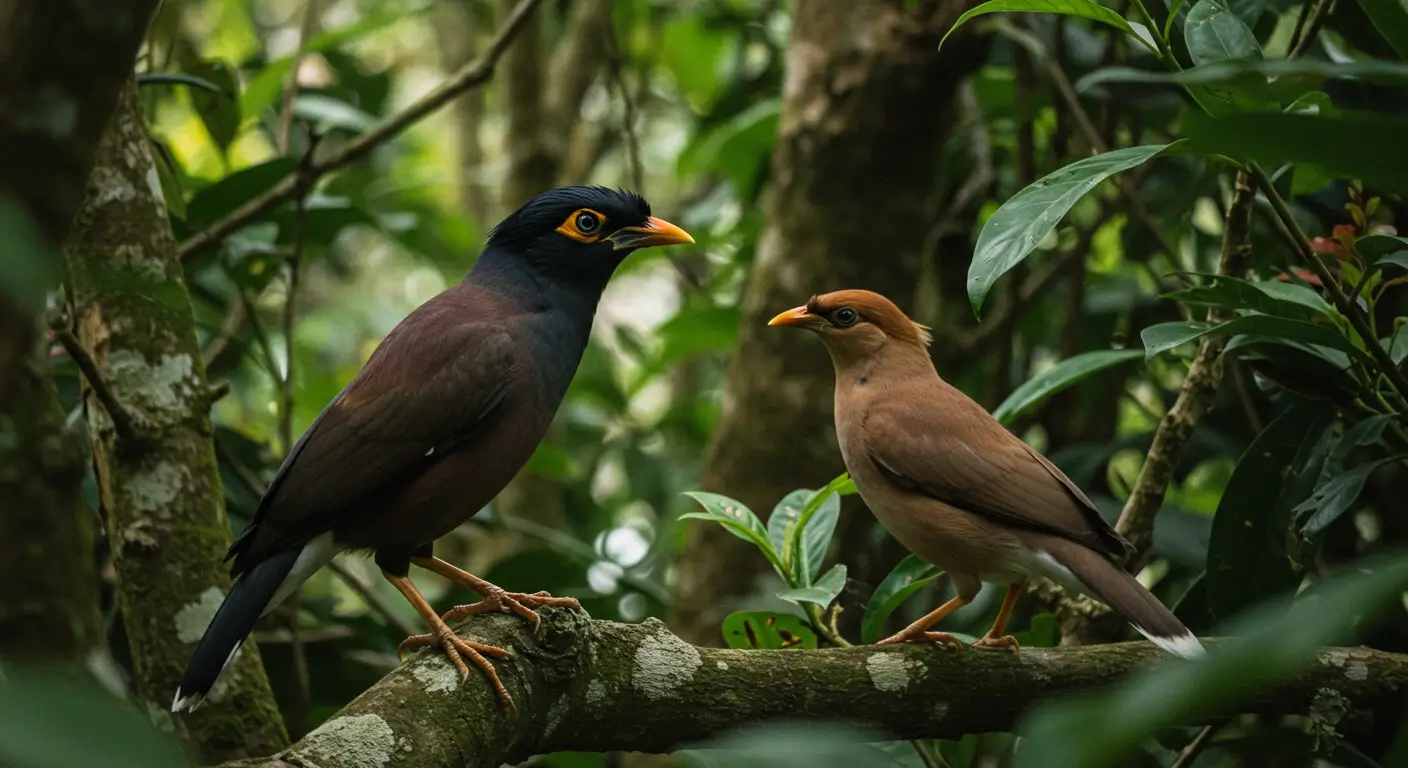
General Characteristics of Bali Myna
This bird possesses many unique and distinguishable traits which differentiate them from other bird species. Here are certain general characteristics of this bird:
| General Characteristics | Features Specific to Bali Myna |
| Scientific Name | Leucopsar rothschildi |
| Size | About 9 inches long |
| Weight | Weighs around 100 grams |
| Color | Bright white body with black wing tips |
| Eye Area | Bare and bright blue skin around the eyes |
| Crest | Upright feather crest on top of its head |
| Beak | Pale yellow and slightly curved |
| Legs and Feet | Grayish-blue with strong claws |
| Voice | Soft whistles and chattering calls |
| Diet | Eats fruits, seeds, insects, and small invertebrates |
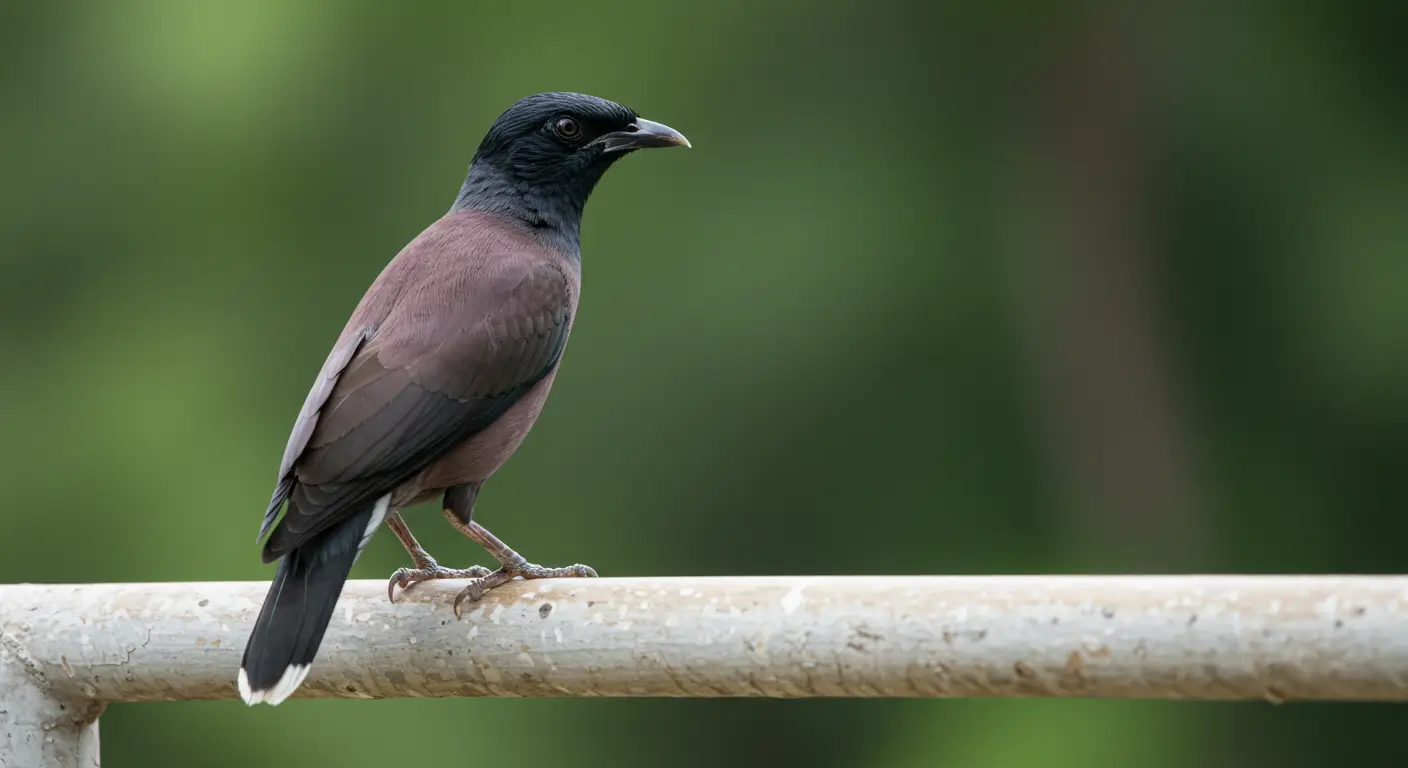
Life Span of Bali Myna
A Bali Myna lives around 5–7 years in the wild in the USA. It can live up to 25 years in captivity with proper care and nutrition.
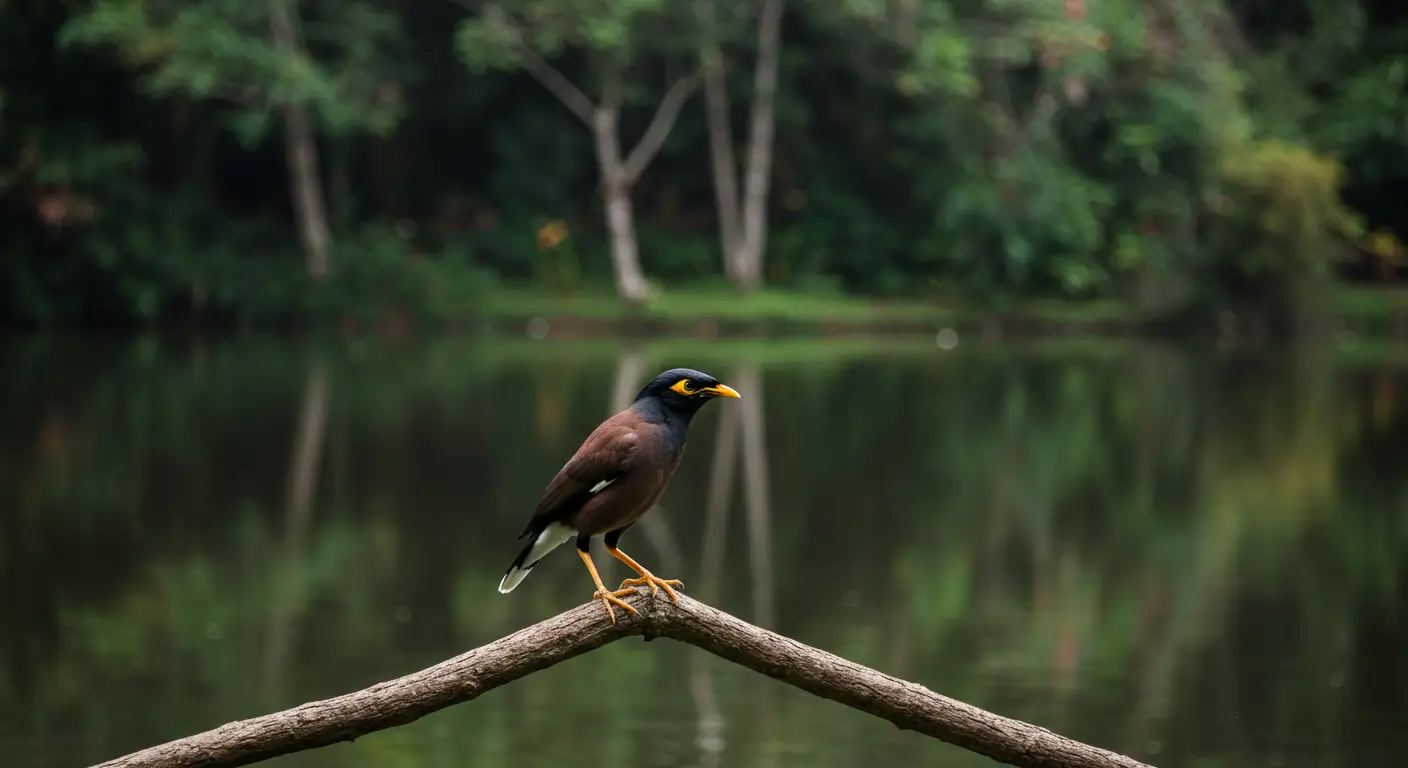
Interesting Facts About Bali Myna
This bird has quite interesting nature and captures public attention with its actions. Here are certain catchy features regarding this rare bird specie:
1. Feather Color Changes with Sunlight
The sunlight can cause a slight glow that makes them appear silver-blue in certain angles. This reflective quality helps them stand out in captivity but also makes them vulnerable in the wild.
It’s one reason why they’re kept in specially designed environments. The feather texture also plays a role in this light reflection.
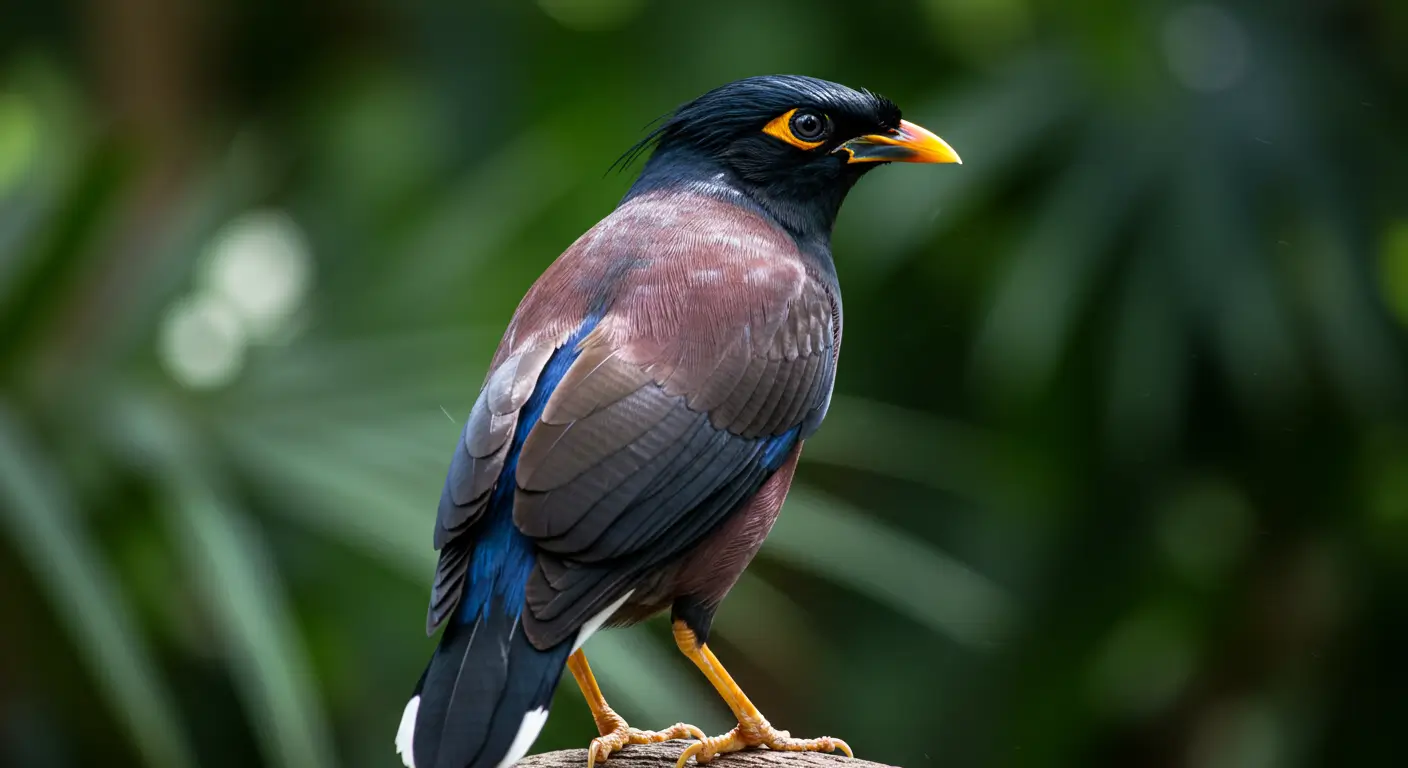
2. Communicate Using Multiple Sounds
The Bali Myna uses a wide range of vocalizations and not just songs. It can produce over 20 distinct sounds, including clicks, whistles, and harsh calls.
This variety helps in expressing emotions like fear, curiosity, and alertness. These calls are used to monitor their health and stress levels. Each bird develops slightly different tones over time.
3. Perform a Unique Mating Dance
Males perform a distinctive dance that involves puffing up feathers and hopping in circles during mating season. The dance includes wing flicking and loud calls to attract females.
4. Use Their Feet Like Hands
Bali Mynas have a surprisingly strong grip and use their feet to hold food or climb vertically. This trait is more common in parrots but rare in starlings. Caretakers often place puzzles in enclosures to encourage foot use.
It’s a sign of intelligence and expertise. Watching them manipulate objects with their feet is a favorite for visitors.
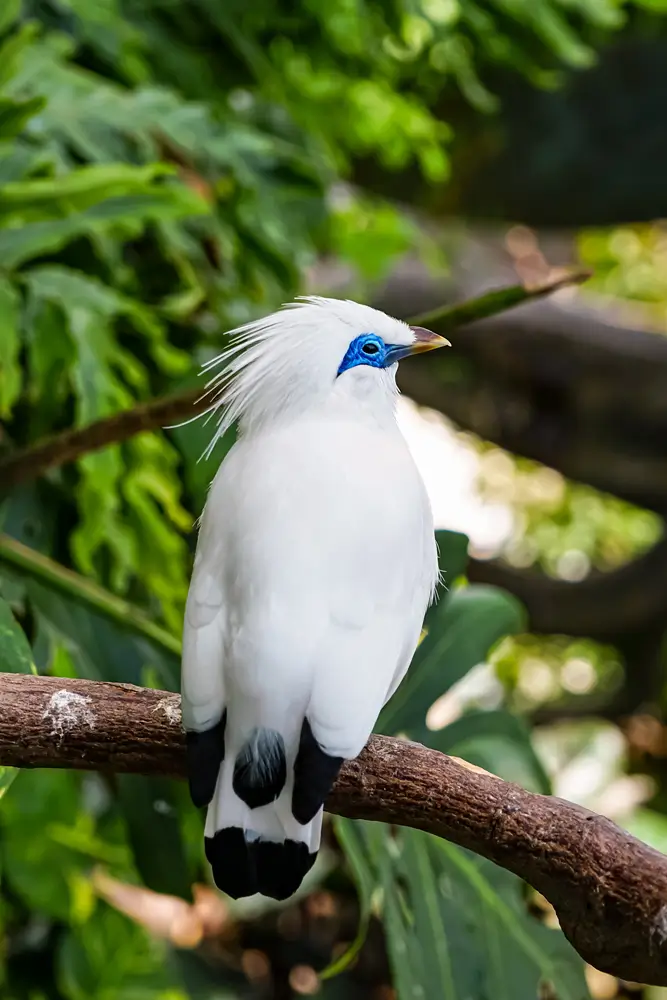
5. Their Eyes Have a Built-in “Sunshade”
A blue patch of skin around the Bali Myna’s eyes acts like a natural sunshield. This bare skin helps protect the eyes from bright light. This trait is important in their tropical habitat. It also helps them focus better during flight.
6. Bali Mynas Are Selective With Food Placement
Bali Mynas often place their food on rocks or branches before pecking. This helps them break it into smaller parts or check for safety. They show preference for flat and high feeding spots.
It’s believed to mimic behaviors in the wild. This habit reflects their cautious and intelligent feeding style.
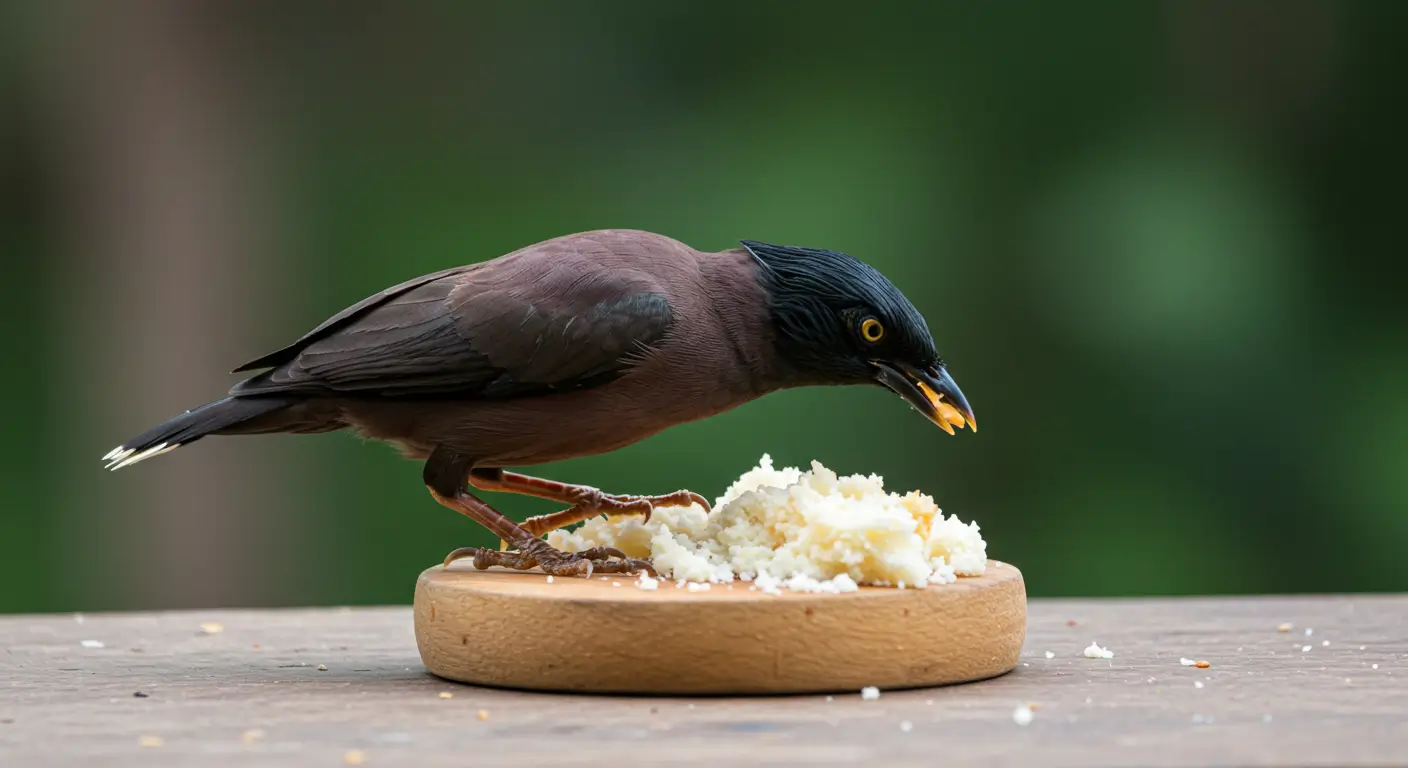
7. Form Pair Bonds That Can Last Years
Bali Mynas are faithful and often stay with the same partner for life. They may go through visible signs of stress on their partner’s death. The pairs are kept together in stable environments.
Their bond is visible through affection and similar behaviors. It’s a crucial trait for breeding success.
8. Are Daytime Sleepers Too
Bali Mynas often take multiple short naps throughout the day. These naps are short and done on high poles with heads tucked backward. It’s part of their natural energy conservation routine.
9. Sometimes Fake Injuries to Distract
A Bali Myna may pretend to be injured for pushing threats away to protect a nest or young. This dramatic behavior mimics a broken wing or limping. It’s a rare but well-documented instinct.
The zoo keepers have witnessed this during breeding season if humans or animals come too close. It shows their strong parental instincts.
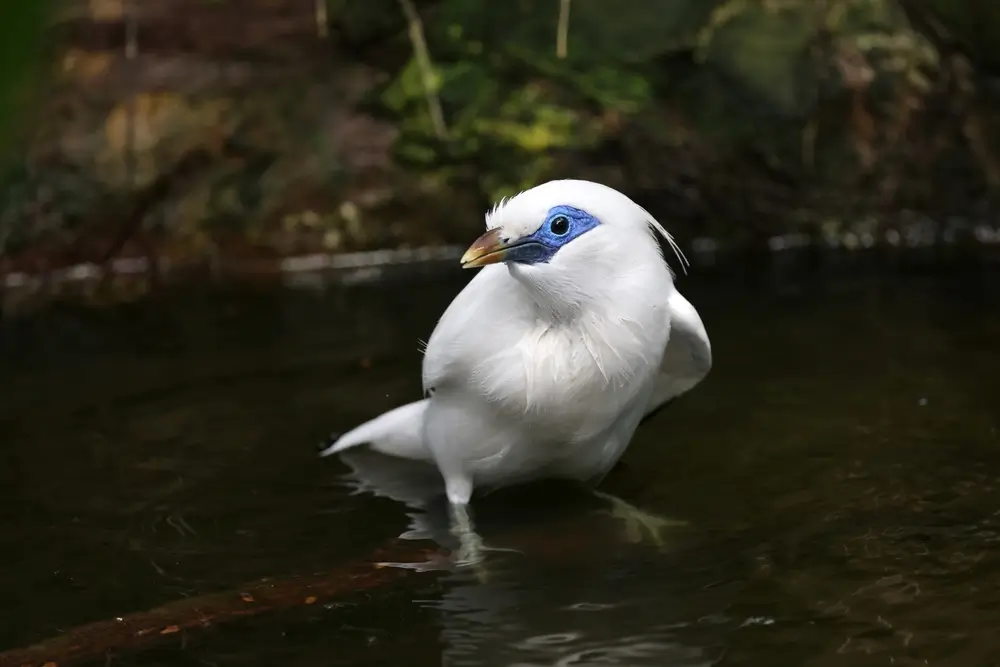
10. Special Oil for Feather Maintenance
They produce oil from a gland near their tail to keep feathers clean and waterproof. This oiling is done through a routine called preening. This activity is monitored as a health sign.
If a Myna stops preening then it often signals illness. The oil also helps maintain feather flexibility and insulation.
11. Chicks Hatch with Minimal Down Feathers
Bali Myna chicks hatch with very little down unlike other song birds. They appear nearly naked and depend heavily on parental warmth. The artificial brooding lamps are often used to help regulate temperature.
Their early development is closely monitored. This trait requires extra care during breeding programs.
12. Build Nests in Unusual Places
Bali Mynas choose tree cavities in the wild and sometimes pick odd spots. American zoos report them nesting in artificial pipes, feeding boxes, or even hollow decorations.
This adaptability is both helpful and challenging for breeders. It forces caretakers to inspect all parts of the enclosure. Their nesting creativity shows problem-solving skills.
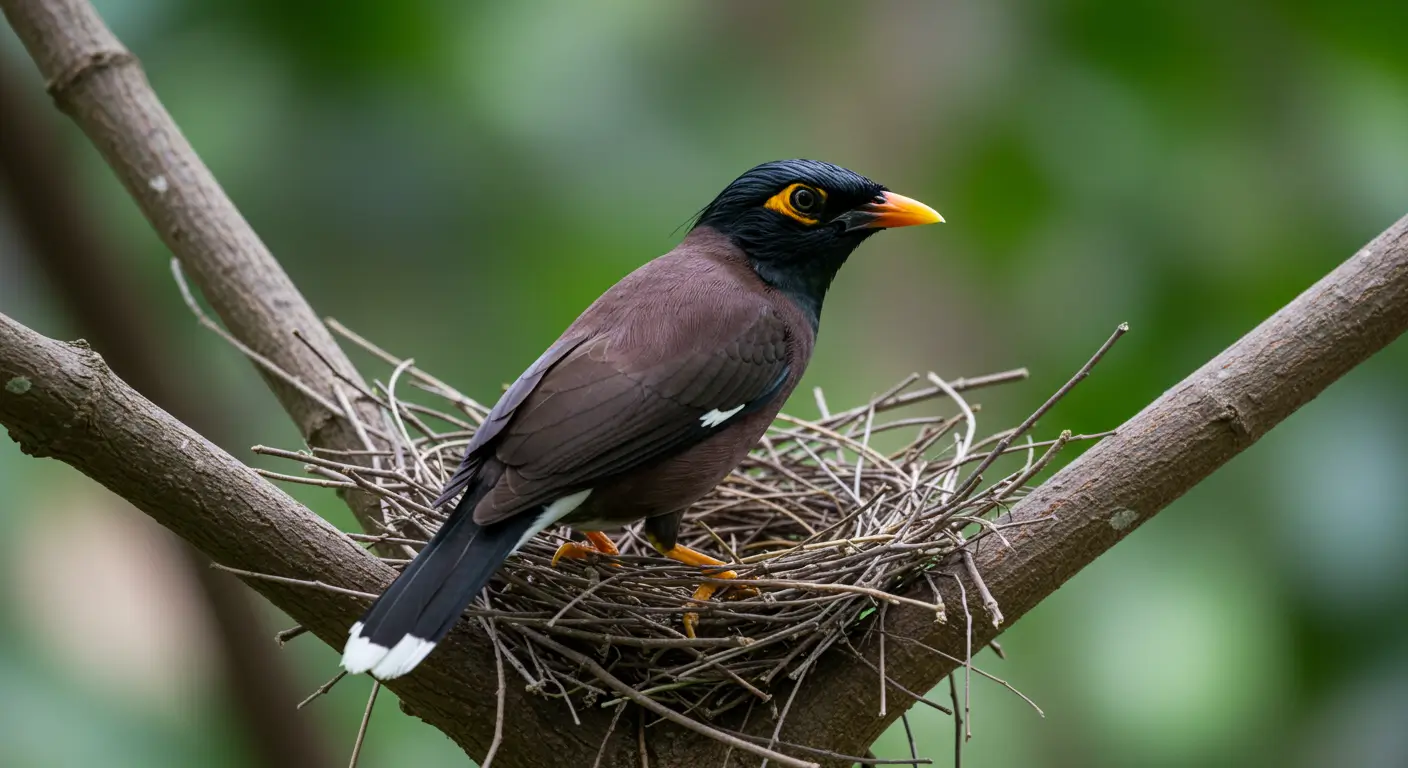
13. Prefer Running to Flying When Threatened
A Bali Myna often runs or hops to escape first instead of flying away immediately. This ground escape tactic helps in forested areas with dense underbrush. It’s different from most birds that take flight instantly which can confuse predators temporarily.
14. Beaks Change Color Slightly with Age
Juvenile Bali Mynas have pale beaks that darken slightly as they age. It’s not dramatic but noticeable over time. This color shift is being used to estimate age when records are unclear. The beak also gets harder with age. This feature helps in tracking health and maturity stages.
15. Surprisingly Good Mimics
Bali Mynas can mimic a few human and environmental sounds. Some have learned to copy doorbells or whistles during captivity. They mostly mimic sounds they hear often and enjoy.
Zoos in America sometimes use controlled audio environments to enrich this behavior. It shows their social and auditory learning capabilities.
16. Recognize Individual Human Caretakers
Bali Mynas can identify and remember specific people. This is based on voice, clothing, or routine. It’s a sign of advanced memory and trust. This behavior helps with long-term care and medical routines.
Sightseeing of Bali Myna
These birds are not native to USA but are seen in some parts of the contry. Here are some regions in which they can be seen:
| Location | State in Which it is Located |
| San Diego Zoo | California |
| Los Angeles Zoo | California |
| Oregon Zoo | Oregon |
| Denver Zoo | Colorado |
| Dallas World Aquarium | Texas |
| Houston Zoo | Texas |
| Saint Louis Zoo | Missouri |
| Brookfield Zoo | Illinois |
| Indianapolis Zoo | Indiana |
| Bronx Zoo | New York |
| National Aviary | Pennsylvania |
| Zoo Miami | Florida |
| Tampa Zoo at Lowry Park | Florida |
| Columbus Zoo and Aquarium | Ohio |
| Cincinnati Zoo | Ohio |
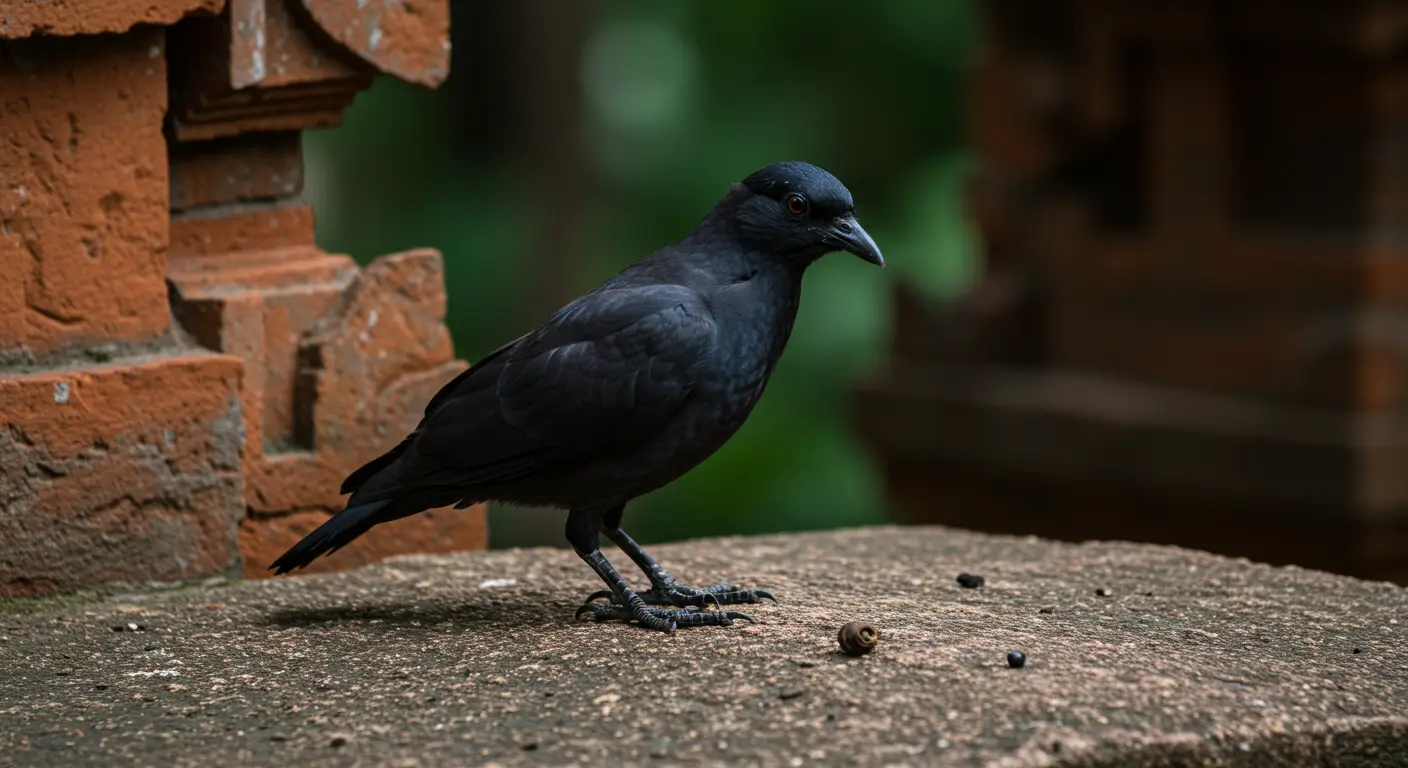
Photography Tips for Bali Myna
Here are certain photography tips for getting some good clicks of this beautiful bird:
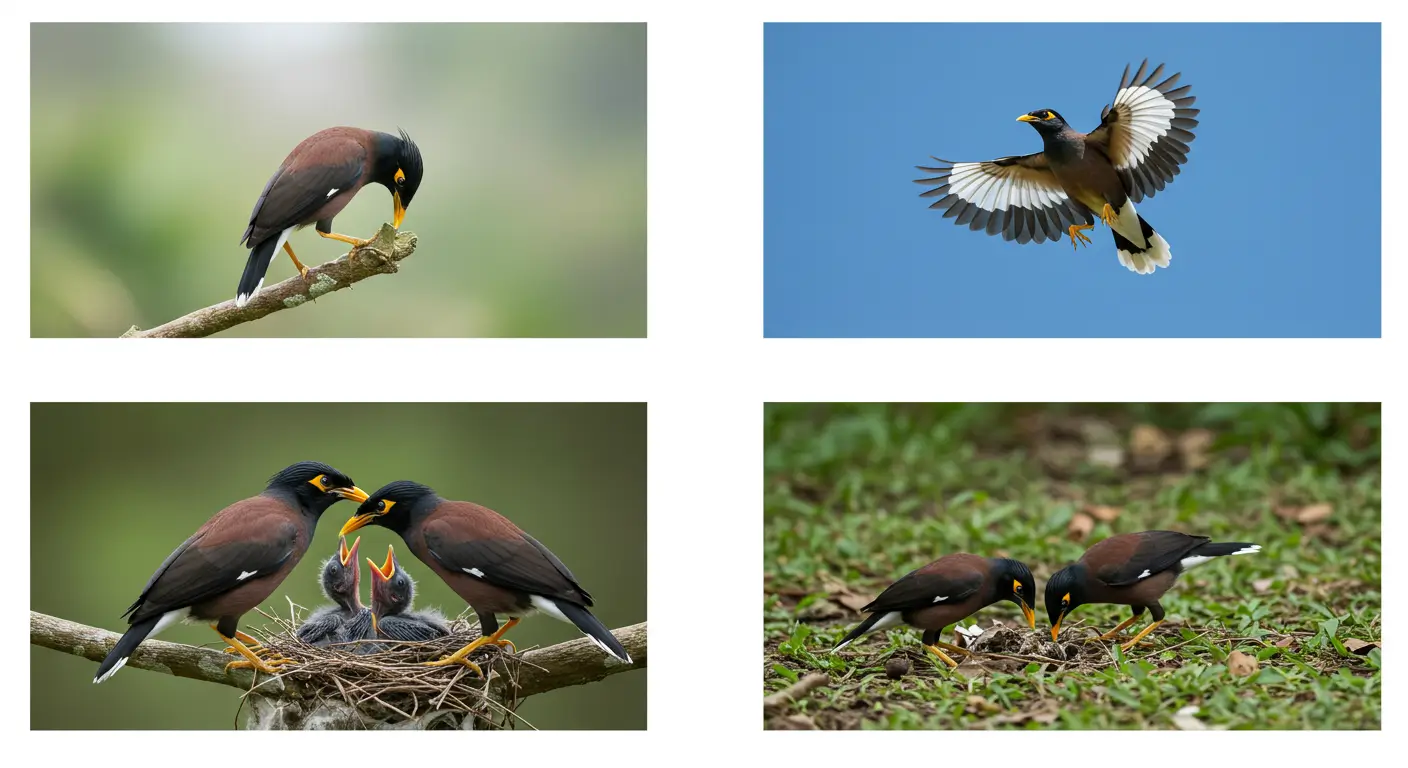
-
Use a zoom lens to capture Bali Myna’s fine white feathers without disturbing it.
-
Shoot in early morning light for soft shadows and better feather detail.
-
Focus on the bird’s blue eye patch to highlight its unique facial feature.
-
Keep your background simple to make the white plumage stand out clearly.
-
Use a fast shutter speed to freeze motion, especially when the bird hops or flies.
Final Remarks
Bali Myna is an adorable bird with attractive features and form strong bonding with humans. They form inseparable pairs and also possess certain unique abilities to protect themselves from predators. They attract the mates by performing dance and communicate using different types of sounds. They are quite interesting species to watch and observe.
FAQs
1. Can you legally own a Bali Myna in the USA?
Yes, but you need a special permit because it’s an endangered species protected by international and U.S. wildlife laws.
2. How much does a Bali Myna cost in the USA?
A Bali Myna can cost between $1,000 and $3,000, depending on the breeder and legal paperwork.
3. Why is the Bali Myna endangered?
Its wild population dropped due to habitat loss and illegal pet trade, making it one of the rarest birds on Earth.

